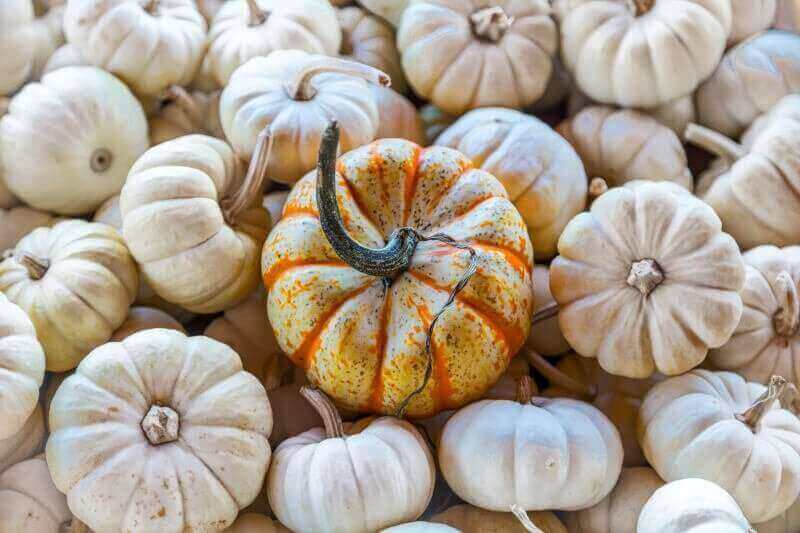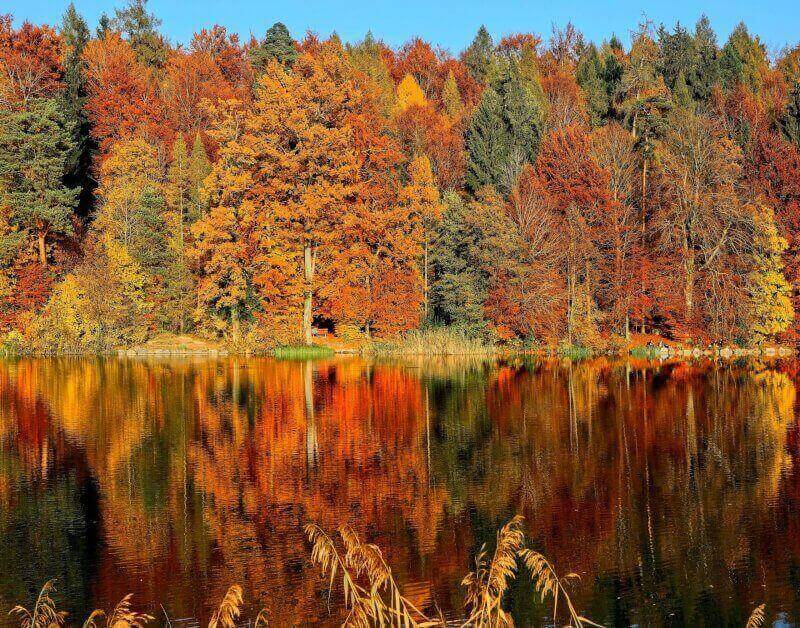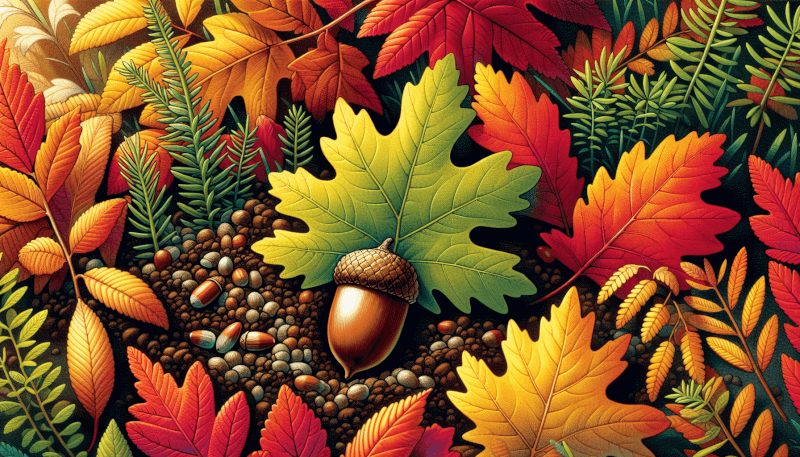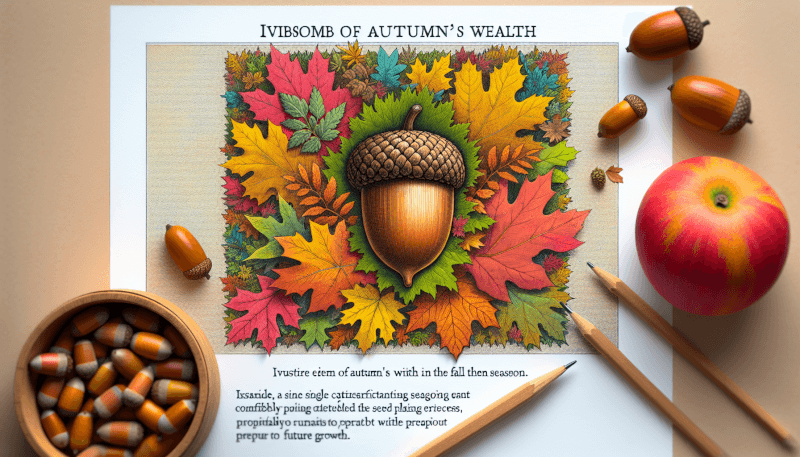Imagine stepping outside into your garden on a crisp autumn morning, surrounded by vibrant hues of red, orange, and yellow. As you stroll through the garden, you notice the last remnants of summer’s blooms, but also the anticipation of a new season approaching. Fall is the perfect time to start sowing your fall garden seeds. Whether you’re a seasoned gardener or just starting out, these fall garden seeds hold the promise of bountiful harvests and continued beauty in your outdoor space. So grab your gloves and trowel, because it’s time to embark on a new gardening adventure.

Choosing Fall Garden Seeds
When it comes to choosing fall garden seeds, there are a few factors to consider. First and foremost, you need to take into account your climate. Different regions have varying weather patterns and temperature ranges during the fall season, so it is important to choose seeds that are suitable for your specific climate.
Once you have determined the climate of your area, you need to think about the ideal planting time for your fall garden. This will largely depend on the first frost date in your region. By knowing when the first frost is expected, you can work backwards to determine the ideal planting time for your fall crops.
Another important aspect to consider when choosing fall garden seeds is selecting cold-tolerant varieties. Fall weather can be unpredictable, with fluctuations in temperature and the possibility of early frost. By choosing seeds that are specifically bred to withstand colder temperatures, you can ensure the success of your fall garden.
Lastly, it is crucial to choose seeds for specific fall crops that you want to grow. Different vegetables and flowers have different planting and growing requirements, so be sure to select seeds that are suitable for the specific crops you have in mind.
Preparing the Garden for Fall Planting
Before you can start planting your fall garden, it is important to prepare the soil and clear out any remaining summer crops. Clearing out summer crops involves removing any old or dying plants from your garden beds. This allows for better airflow and prevents the spread of diseases to your fall crops.
After clearing out summer crops, it is time to amend the soil. Adding organic matter such as compost or well-rotted manure will help improve soil structure and fertility, providing a healthy environment for your fall plants to grow.
Enhancing drainage is another key step in preparing your garden for fall planting. Poor drainage can lead to root rot and other diseases, so consider incorporating organic matter or creating raised beds to improve drainage in your garden.
Creating raised beds can offer many benefits for your fall garden. Raised beds provide better drainage, improve soil temperature, and make it easier to control weeds. Consider constructing raised beds to maximize the productivity of your fall garden.
To further enhance the health and productivity of your fall garden, mulching is essential. Mulching helps retain moisture in the soil, suppresses weed growth, and regulates soil temperature. Apply a layer of organic mulch such as straw or wood chips around your plants to reap these benefits.

Starting Seeds Indoors
Starting seeds indoors is a great way to get a head start on your fall garden. To begin, gather the necessary supplies such as seed trays or pots, seed starting soil, seeds, and a watering can or spray bottle.
Prepare seed trays or pots by filling them with seed starting soil. This type of soil is specifically formulated to provide the ideal growing conditions for young seedlings. Be sure to moisten the soil before sowing the seeds.
Sow the seeds according to the instructions on the seed packet. Different seeds have different requirements for depth and spacing, so follow the guidelines provided. Make small indentations in the soil with your finger or a pencil, place the seeds inside, and cover them with a thin layer of soil.
Providing proper lighting and warmth is crucial for successful seed germination. Place the seed trays or pots in a location where they will receive 12-16 hours of bright, indirect light each day. If natural light is insufficient, use a grow light to ensure adequate lighting. Additionally, maintain a temperature between 65-75°F (18-24°C) to encourage optimal seedling growth.
Once the seedlings have grown several sets of leaves and are sturdy enough to handle, it is time to transplant them outdoors. This typically occurs when all danger of frost has passed and the soil has warmed up enough for planting.
Direct Sowing Seeds
Direct sowing seeds involves planting them directly into the garden soil rather than starting them indoors. This method is suitable for certain crops that do not tolerate transplanting well or when the growing season is long enough to allow seeds to mature before the first frost.
Identify suitable crops for direct sowing in your fall garden. Vegetables such as radishes, carrots, lettuce, and spinach are commonly direct sown. Check the seed packet or consult a gardening guide for specific information on which crops are best suited for direct sowing.
Before sowing the seeds, prepare the soil by removing any weeds or debris and loosening the top few inches. This will create a suitable environment for the seeds to germinate and grow.
Sow the seeds at the correct depth as indicated on the seed packet. Generally, small seeds are sown more shallowly than larger seeds. Gently press the soil over the seeds to ensure good seed-to-soil contact.
Water the newly sown seeds immediately after planting, ensuring that the soil is moist but not waterlogged. Continue to water regularly to keep the soil consistently moist during the germination and early growth stages.
As the seedlings emerge and grow, it is important to thin them out to provide adequate space for optimal growth. Overcrowded seedlings can compete for resources and result in stunted growth. Follow the recommended spacing guidelines on the seed packet and carefully remove excess seedlings.

Caring for Fall Seedlings
Caring for fall seedlings involves providing them with adequate water, applying organic fertilizers, monitoring pests and diseases, implementing natural pest control methods, and protecting them from frost.
Fall seedlings require consistent moisture to ensure healthy growth. Water them regularly, keeping the soil evenly moist but not waterlogged. Mulching around the seedlings can help retain moisture and reduce the frequency of watering.
Applying organic fertilizers will provide the necessary nutrients for your fall seedlings. Choose slow-release fertilizers or compost to feed the plants over an extended period of time. Follow the recommended application rates and avoid over-fertilizing, as this can lead to excessive foliage growth at the expense of fruit or flower production.
Regularly monitor your fall seedlings for pests and diseases. Early detection and intervention are key to preventing damage and ensuring the overall health of your plants. Remove any damaged or infested leaves or use organic pest control methods to manage infestations.
Implementing natural pest control methods can help protect your fall seedlings without resorting to chemical pesticides. Beneficial insects, such as ladybugs and lacewings, can help control pest populations naturally. Additionally, companion planting can deter pests by confusing them or attracting beneficial insects.
As fall temperatures fluctuate and the threat of frost looms, it is important to protect your seedlings. Covering them with row covers or cloths can provide insulation and prevent frost damage. Monitor the weather forecast and act accordingly to safeguard your fall crops.
Extending the Fall Growing Season
To make the most of your fall garden, consider using season extenders like row covers. Row covers create a mini greenhouse effect, trapping heat and protecting plants from frost. They allow you to extend the growing season by several weeks or even months, depending on your climate.
Another strategy for extending the fall growing season is planting in containers. Containers offer the advantage of mobility, allowing you to move your plants to sheltered areas or indoors during periods of extreme cold or inclement weather. This flexibility ensures that your fall crops continue to thrive.
Interplanting with companion crops can also help extend the fall growing season. Some vegetables, such as lettuce or radishes, have a shorter growing season and can be harvested earlier. By strategically interplanting these quick-growing crops with slower-growing ones, you can maximize the use of your garden space and enjoy an extended harvest.
Implementing succession planting is a great technique for prolonging the fall growing season. Rather than planting everything at once, stagger your plantings to ensure a continuous supply of fresh produce. As one crop is harvested, replant the area with a new crop that will mature later in the season.
For those who have access to cold frames or greenhouses, these structures provide excellent opportunities for extending the fall growing season. They can protect your plants from harsh weather conditions and maintain more stable temperatures, allowing you to grow a wider range of crops well into the colder months.

Harvesting Fall Crops
Knowing the optimal harvest time for your fall crops is essential to ensure peak flavor and quality. Each vegetable or herb has specific indicators to look for when determining the right time to harvest. For example, ripe tomatoes should be firm, glossy, and have a vibrant color, while leafy greens are best harvested when young and tender.
Properly storing harvested fall crops is crucial for preserving their freshness and flavor. Some crops, like root vegetables, can be stored in a cool, dark place with high humidity. Others, such as leafy greens, are best consumed within a few days of harvest. Refer to specific storage guidelines for each crop to ensure maximum shelf life.
Once your fall crops are harvested and properly stored, it’s time to enjoy the fruits of your labor. Fresh produce from your own garden is not only delicious but also nutritious. Savor the flavors of your fall harvest by incorporating them into your meals and sharing them with family and friends.
Lastly, don’t forget to save seeds from your fall crops for future planting. Seed saving is a cost-effective and sustainable way to ensure a continuous supply of seeds for your garden. Select the best plants for seed saving, harvest the seeds at the right stage of maturity, and process and store them properly for future use.
Recommended Fall Garden Seeds
When it comes to fall garden seeds, there are several categories to consider. Cool-season vegetables such as broccoli, cauliflower, and Brussels sprouts thrive in cooler weather and are perfect additions to any fall garden. Leafy greens like lettuce, spinach, and kale are also great options for fall, as they can tolerate lower temperatures and can be harvested multiple times.
Root crops such as carrots, beets, and radishes are ideal choices for fall gardening. These crops prefer cooler temperatures and can be harvested when their roots have reached the desired size. Herbs like parsley, cilantro, and dill can also be planted in the fall, providing fresh flavors to your culinary creations.
To add a burst of color to your fall garden, consider planting fall-blooming flowers. Chrysanthemums, pansies, and asters are just a few examples of flowers that thrive in cooler temperatures and can bring vibrant hues to your outdoor space.

Seed Saving Tips for Fall Crops
Saving seeds from your fall crops allows you to preserve desirable traits and adapt seeds to your specific growing conditions. To successfully save seeds, start by selecting the best plants for seed saving. Look for plants that exhibit the desired characteristics such as disease resistance, yield, or flavor.
Harvest seeds at the right stage of maturity, which may vary depending on the crop. Generally, allow the fruit or pod to fully mature and dry on the plant before harvesting the seeds. Remember to collect seeds from multiple plants to maintain genetic diversity.
After harvesting the seeds, process and store them properly to ensure their viability. Remove any debris or chaff from the seeds and allow them to fully dry. Store them in a cool, dry place in airtight containers or envelopes to prevent moisture and insect damage.
Labeling and organizing saved seeds is essential for easy identification and future planting. Clearly label each container or envelope with the crop name, variety, and date of harvest. Consider using a seed organization system to keep your saved seeds organized and easily accessible.
Conclusion
Choosing fall garden seeds and preparing your garden for fall planting are the first steps towards a successful fall gardening experience. By considering your climate, determining the ideal planting time, and selecting cold-tolerant varieties, you can ensure the success of your fall garden.
Clearing out summer crops, amending the soil, enhancing drainage, creating raised beds, and mulching the garden are essential steps in preparing your garden for fall planting. These measures create a healthy and productive environment for your fall crops.
Starting seeds indoors and direct sowing seeds are two methods for establishing your fall garden. Each method has its advantages and is suitable for different crops. Providing proper care for fall seedlings, protecting them from pests and frost, and extending the fall growing season can maximize the yield of your fall garden.
Harvesting fall crops at the optimal time, properly storing them, and savoring the fresh produce are the rewards of your fall gardening efforts. Saving seeds for future planting allows you to continue the cycle of growth and ensures a sustainable garden for years to come.
Recommended fall garden seeds encompass a variety of cool-season vegetables, leafy greens, root crops, herbs, and fall-flowering plants. Choosing seeds that are well-suited for your climate and personal preferences will result in a bountiful and diverse fall garden.
Saving seeds from your fall crops is a valuable practice that allows you to preserve desirable characteristics and adapt seeds to your specific growing conditions. Following seed saving tips, including selecting the best plants, harvesting seeds at the right stage, processing and storing them properly, and labeling and organizing saved seeds, ensures successful seed saving.
Reflecting on a successful fall gardening experience and planning for next year’s fall garden can help you learn from your experiences and continually improve your gardening skills. With careful planning, preparation, and cultivation, your fall garden can be a source of joy and abundance.

